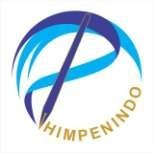Karakteristik Kimia Tanah pada Areal Kelapa Sawit dan Nilai Konservasi Tinggi (NKT) di Kabupaten Tapin, Provinsi Kalimantan Selatan
Abstract
In the practice of oil palm plantation management, land clearing and cultivation using heavy equipment will change soil conditions from anaerobic to aerobic. This condition will cause sulfide compounds contained in the soil, or commonly referred to as pyrite (FeS2) to undergo an oxidation process that can cause the formation of sulfuric acid compounds (H2SO4) which when dissociated will release H+ ions in the soil solution, thus increasing soil acidity. In addition, improved drainage will also lead to a high likelihood of plant nutrients being leached from the soil. On the other hand, the HCV areas will be left unmanaged by maintaining the original vegetation adjacent to the oil palm plantations. So there are two different land management systems between oil palm land and HCV areas which in theory will have different land characteristics, one of which can be seen from differences in soil chemical characteristics. The purpose of this study was to determine the differences in the characteristics of several soil chemical properties including pH, C-organic, Al-dd and P-available in oil palm land and HCV areas. This research is a field research using survey method. Sampling in the field was carried out by purposive sampling at PT Kharisma Inti Usaha, Tapin Regency, South Kalimantan Province. Soil samples used in this study were soil samples at a depth of 0-30 cm and 30-60 cm on oil palm land and HCV areas where each land was taken as many as 10 sampling points, so that the total sample points amounted to 40 sampling points. The results showed that the characteristics of soil acidity (pH), carbon (C-organic), aluminum (Al-dd) and phosphorus (P-available) on oil palm land were lower than HCV areas in PT Kharisma Inti Usaha Tapin Regency.
References
Baihaki, A., Zuraida, Z., Ilyas, I. 2019. Perbandingan sifat kimia pada tanah hutan dan kebun kelapa sawit (Elaies guineensis jacq) di Kecamatan Beutong Kabupaten Nagan Raya. Jurnal Ilmiah Mahasiswa Pertanian 4(2), 434-445.
Hanafiah, K.A. 2008. Dasar-Dasar Ilmu Tanah. PT. Raja Grafindo Persada, Jakarta.
Hasibuan, B.E. 2008. Pengelolaan Tanah dan Air Lahan Marginal. Universitas Sumatera Utara, Medan.
Herviyanti, H., Anche, C., Gusnidar, G., Darfis, I. 2012. Perbaikan sifat kimia oxisol dengan pemberian bahan humat dan pupuk P untuk meningkatkan serapan hara dan produksi tanaman jagung (Zea mays, L.). Jurnal Solum 9(2), 51-60.
Lestari, Y., Ma’as, A., Flora, J. 2016. Pengaruh aerasi tanah sulfat masam potensial terhadap pelepasan SO42-, Fe2+, H+, dan Al3+. Jurnal Tanah dan Iklim 40(1), 25-34
Nahlunnisa, H. 2016. Keanekaragaman spesies tumbuhan di areal nilai konservasi tinggi (NKT) perkebunan kelapa sawit Provinsi Riau. Media Konservasi 21(1), 91-98.
Nazemi, D., Hairani, A. 2012. Optimalisasi pemanfaatan lahan rawa pasang surut melalui pengelolaan lahan dan komoditas. Agrovigor: Jurnal Agroekoteknologi 5(1), 52-57.
Nurhasni, N., Isrun, I. 2021. Analisis sifat kimia tanah pada beberapa penggunaan lahan di Desa Sejahtera Kecamatan Palolo Kabupaten Sigi. Agrotekbis: E-Jurnal Ilmu Pertanian 9(3), 778-785.
Purba J.H.V., Sipayung, T. 2017. Perkebunan kelapa sawit Indonesia dalam perspektif pembangunan berkelanjutan. Masyarakat Indonesia 43 (1): 81-94.
Putri, O.H. 2018. Sifat Kimia Tanah Pada Berbagai Penggunaan Lahan di UB Forest. Universitas Brawijaya, Malang.
Rahmah, S., Yusran, Y., Umar, H. 2014. Sifat kimia tanah pada berbagai tipe penggunaan lahan di Desa Bobo Kecamatan Palolo Kabupaten Sigi. Jurnal Warta Rimba, 2(1), 88-95.
Saad, Asmadi, Achnopha, Y., Muhammad, H.I. 2008. Penerapan teknologi perbaikan lahan sulfat masam pada lahan sawah seluas 100 hektar di desa Pematang Mayan dan Rantau Makmur Kabupaten Tanjung Jabung Timur Jambi. Jurnal Pengabdian pada Masyarakat 46, 46-54.
Stevenson, F.J. 1994. Humus Chemistry: Genesis, Composition, Reactions. John Wiley & Sons, New Jersey.
Sutandi, A., Nugroho, B., Sejati, B. 2011. Hubungan kedalaman pirit dengan beberapa sifat kimia tanah dan produksi kelapa sawit (Elais guineensis). Jurnal Ilmu Tanah dan Lingkungan 13(1), 21-24.
Wahyudi, I. 2007. Peran asam humat dan fulvat dari kompos dalam detoksifikasi aluminium pada tanah masam. Buana Sains 7(2), 123-130.
Yudianto, E.F. 2016. Penanganan Kebutuhan Air dan Keracunan Pirit di Daerah Irigasi Rawa Kecamatan Jejangkit Kabupaten Barito Kuala dengan Mempergunakan Model Duflow. Universitas Brawijaya, Malang.
Yuliana, E.D. 2010. Inovasi teknologi kedalaman muka air tanah dan lama pengeringan terhadap sifat kimia tanah sulfat masam. Jurnal Widya Wreta 1, 15-24.
Yuliana, E.D. 2012. Jenis mineral liat dan perubahan sifat kimia tanah akibat proses reduksi dan oksidasi pada lingkungan tanah sulfat masam. Jurnal Bumi Lestari 12(2), 327-337.

















